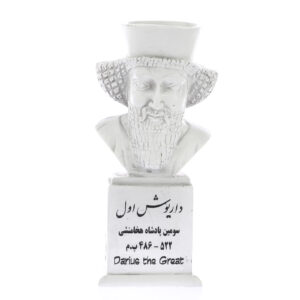In general, in this period, the art of sculpture and the creation of reliefs on stone served architecture, and these high capitals, in addition to creating the grandeur of the Achaemenid Empire, were also places for the placement of roof beams. The statue is about 17 cm high, weighs less than 1 kg and is made of fiberglass. The Shahriar Statue and Sculpture Workshop created this statue inspired by the role of the roaring lion on the headlines of the Achaemenid period. Sculptures can be of any gender, can be of any size, shape, complex or simple. But each of them definitely has a message for us. They can be mythical heroes whose names we have heard in stories, or they can be simple geometric shapes. They can be the body of a popular poet on a crowded city square, or even a clay bird on a ledge. The statues look like travel. A journey from everyday life to feeling and thinking, to beauty and, most importantly, to the dialogue of different civilizations, cultures and ideas. Sculptures can represent an idea, culture or civilization. A culture and thought that sometimes speaks to man from past centuries.
Shahbaz (Persian: شاهباز) is the name of a fabled bird. It is like an eagle, bigger than a hawk or falcon. The shahbaz lived in the Zagros, Alborz, and Ghafghaz mountains of Iran. In old Persian mythology, Shahbaz was a god who helped the Iranians and guided Faravahar to Iran zamin. During the Achaemenid era, especially at the time of Cyrus the Great, the Persian imperial flag was rectangular in shape, divided kite-like into four equal triangles alternating between two colors. In the excavations at Persepolis archaeologists found a standard depicting a Shahbaz or golden eagle (Derafsh-e Shahbaz-e-Talayi) with open wings. The current belief is that this was the official symbol of Iran under Cyrus the Great and his heirs.
Shahbaz literally means “royal falcon”. Burton considered it to refer to the Goshawk, Accipiter gentilis. “Shahbaz” may also refer to the eastern imperial eagle which is known as imperial eagle (Persian: عقاب شاهی) which is the second largest (after the golden eagle) eagle in Iran.











 Candle Holder
Candle Holder Coasters
Coasters Jewelry Box
Jewelry Box


















